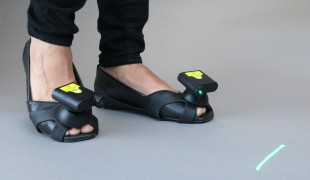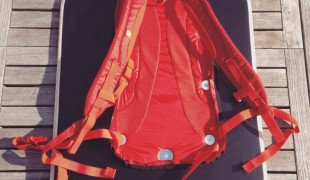- 3338
- 279
- 8
- 13
- 0
- Help Ukraine
About the solution
Sandra was diagnosed with Parkinson when she was forty years old. One day se was randomly fiddling with a little knitting marker and placed it on her glasses. She immediately noticed an effect on her Hemispatial neglect, a condition that takes away awareness and control on the left side of the body. This reaction was a surprise for her as suddenly she could feel her left side of the body, she could feel warmth. Right after this happened the idea came to her like a "lightning bolt": if she could alter messages to her brain by simply placing something in her peripheral vision, then she also could make a device to help to control Parkinson's symptoms.
After two years of developing and testing her idea Sandra brought us her Eye Guide MC which is a discreet and no-surgery device that hooks over the ear. This device is based on weight, as the brain notices the weight of the guide and the eye picks up the Guide in its peripheral vision. This combination sends a signal to the brain, helping it to find new pathways for movement and speech messages, as well as improving balance and coordination.
In 2015 Sandra founded a company, EYE GUIDE MC, to publicize and divulge her device, dedicating her team to help people with Parkinson regain their independence. The Eye Guide MC device is a Class 1 Medical Device that is CE marked, and MHRA accredited.
Adapted from:
https://www.eyeguidemc.co.uk/
https://gramersi.com/2022/01/10/sandra-mcdonoughs-eye-guide-mc-for-parki...
https://thelincolnite.co.uk/2021/10/spalding-woman-invents-device-to-hel...
https://www.youtube.com/watch?v=49r6Z2b-faY
This solution shall not include mention to the use of drugs, chemicals or biologicals (including food); invasive devices; offensive, commercial or inherently dangerous content. This solution was not medically validated. Proceed with caution! If you have any doubts, please consult with a health professional.
DISCLAIMER: This story was written by someone who is not the author of the solution, therefore please be advised that, although it was written with the utmost respect for the innovation and the innovator, there can be some incorrect statements. If you find any errors please contact the patient Innovation team via info@patient-innovation.com
-
-
350
-
0
-
4289

Collaborator Pierluigi Mantovani creates Evolution Devices - solutions that aim to transform Multiple Sclerosis Management
CAREGIVING
BODY BALANCE: Maintaining body balance
STANDING UP: Standing up from a seated position
WALKING: Walking
Multiple Sclerosis
Assistive Daily Life Device (to help ADL)
Walking Aid (wheelchair/walker/crutches)
App (Including when connected with wearable)
AI algorithm
Body-Worn solutions (Clothing, accessories, shoes, sensors...)
Restoring mobility
Regaining sensory function
Managing pain
Promoting self-management
Preserving Organ Function
Managing Neurological Disorders
Maintaining Balance and Mobility
To improve Treatment/Therapy
Preventing (Vaccination, Protection, Falls, Research/Mapping)
Raise awareness
Caregiving Support
General and Family Medicine
Internal Medicine
Medical Genetics
Neurology
Physical Medicine and Rehabilitation
United States
-
-
-
860
-
7
-
18927

Path Finder - a shoe attachment to alleviate 'freezing of gait' in Parkinson's
WALKING: Walking
BODY BALANCE: Maintaining body balance
STANDING UP: Standing up from a seated position
Parkinson's Disease
Body-Worn solutions (Clothing, accessories, shoes, sensors...)
Assistive Daily Life Device (to help ADL)
Frequent falls
Gait abnormalities (e.g., walking difficulties, unsteady gait)
Loss of balance
Stiffness or rigidity (difficulty moving)
Tremors
Recovering cognitive function
Promoting self-management
Managing Neurological Disorders
Maintaining Balance and Mobility
Neurology
Physical Medicine and Rehabilitation
Denmark
-
-
-
678
-
0
-
8626

Father builds changing table for his son
WALKING: Walking
Body-Worn solutions (Clothing, accessories, shoes, sensors...)
Assistive Daily Life Device (to help ADL)
Recovering cognitive function
Promoting self-management
Preserving Organ Function
Managing Neurological Disorders
Promoting inclusivity and social integration
Maintaining Balance and Mobility
Preventing (Vaccination, Protection, Falls, Research/Mapping)
Neurology
Pediatrics
Mobility issues
Pediatric Innovations
Mental health support
Solutions for Disabled people
Belgium
-
 en
en